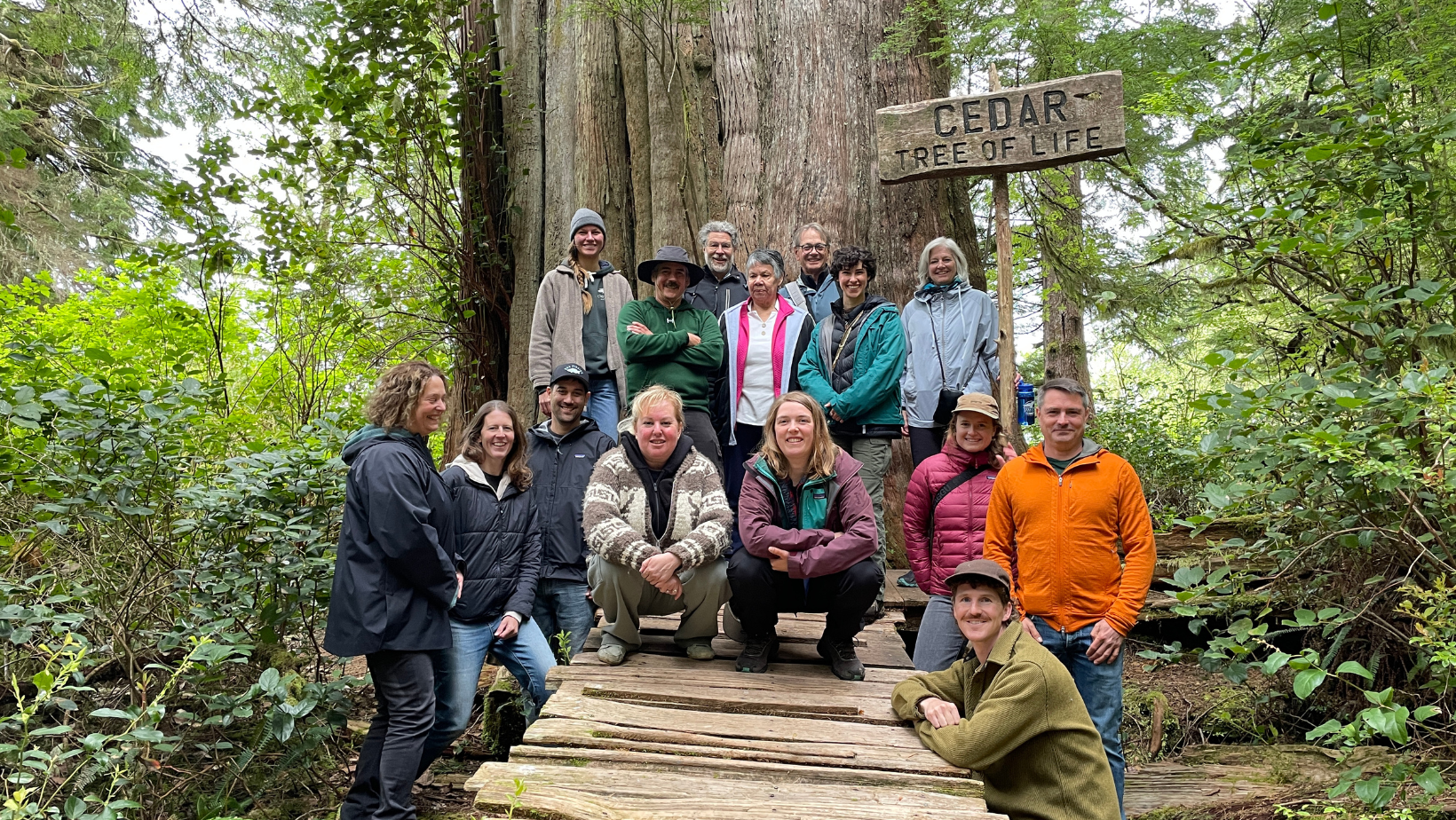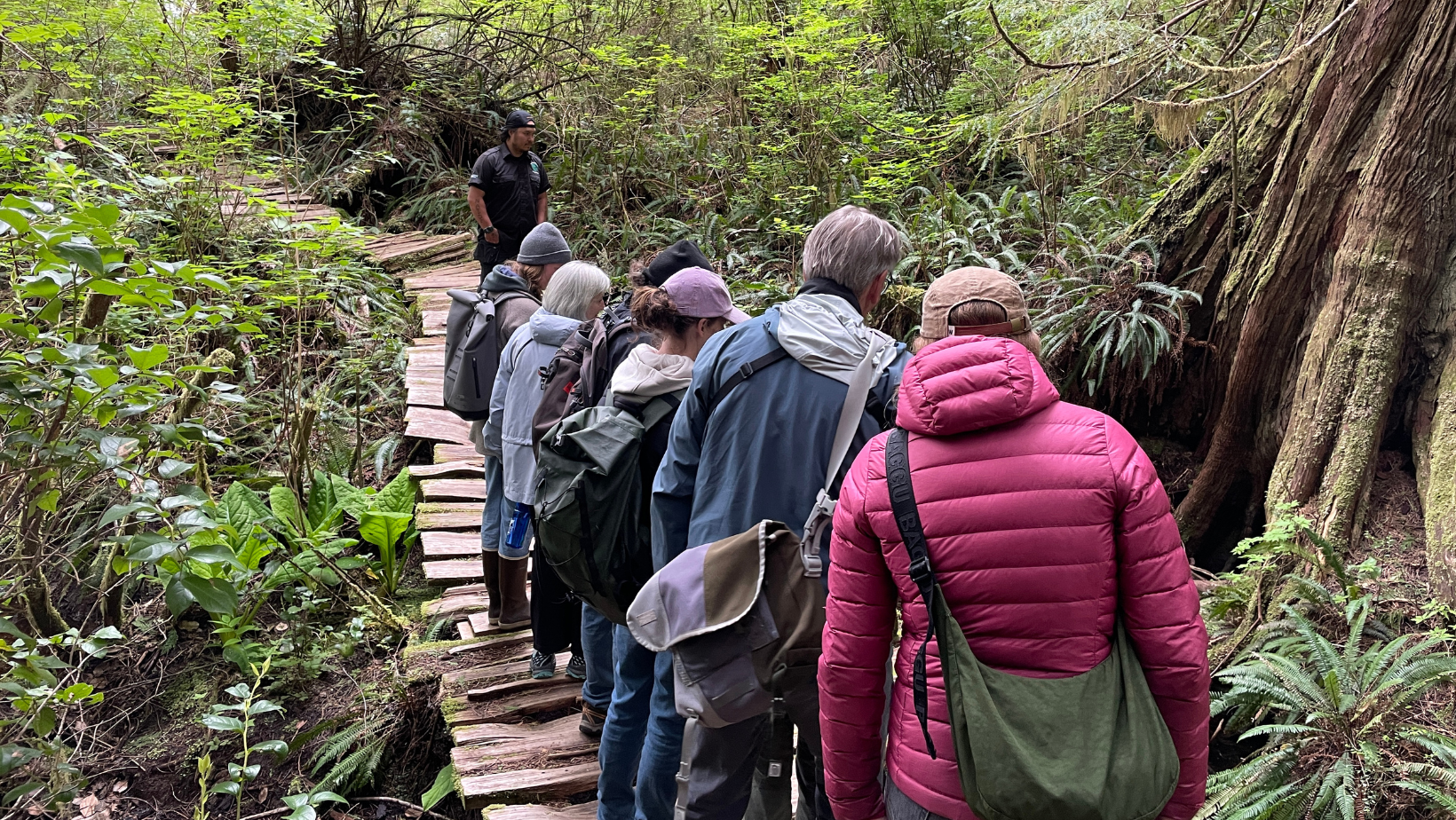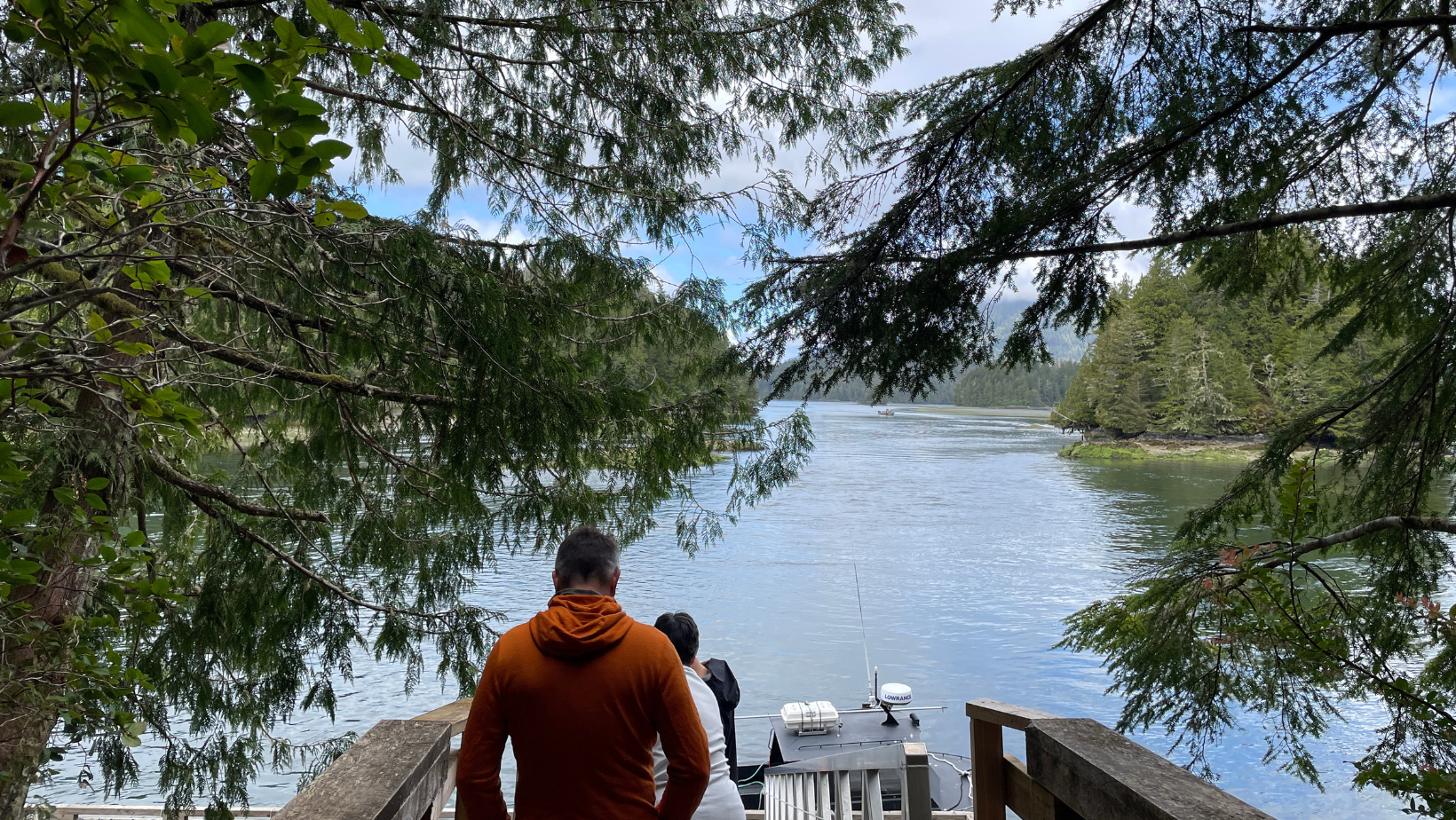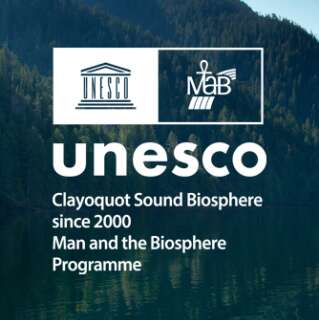Deepening Connections: Reflections on the 2025 BC Biosphere Gathering

This past May, we hosted the 4th annual BC Biosphere Gathering in our home region. Each year, this gathering brings together partners from British Columbia’s three UNESCO-designated biosphere regions, Clayoquot Sound, Mount Arrowsmith, and Átl’ka7tsem/Howe Sound, for a multi-day opportunity to connect, collaborate, and grow stronger together as a network.
Though we often work closely with our fellow biosphere partners throughout the year in virtual meetings, nothing compares to gathering in person on the land. These in-person gatherings are rich opportunities to deepen our relationships, share lessons from our communities, and advance collaborative action on the challenges we all face.

Day One: Starting in a Good Way
We began our gathering in ƛaʔuukʷiʔatḥ (Tla-o-qui-aht First Nations) territory, at the beloved Common Loaf Bake Shop in Načiks (Tofino), owned by renowned local activist Maureen Fraser. More than just a bakery, the Common Loaf is a long-standing community hub where people gather to share stories, ideas, and meals. Its welcoming atmosphere made it the perfect place to kick off the gathering in a warm and inclusive way.
We were honoured to be welcomed to the territory by Gisele Maria Martin, cultural lifeways activist, Tribal Parks Guardian, land vision coordinator, and artist. She graciously shared stories that grounded us in place and reminded us of the deep cultural ties and responsibilities held by Indigenous Nations in this region. The evening featured a delicious, locally inspired meal, providing a nourishing space for participants to connect, share expectations, and begin weaving the relationships that would continue to strengthen throughout the gathering.

Day Two: Whales, Rainforest, and Focused Conversations
On our second day, we gathered at Jamie’s Whaling Station to learn from Ashley Hoyland and the work she has done with the Marine Education and Research Society (MERS). Ashley shared insights into the ongoing monitoring and conservation efforts for whales in the region, critical knowledge in a time when marine ecosystems face growing threats from noise, pollution, and climate change.
From there, we travelled by boat to Wah-nah-jus-Hilthoois Tribal Park and walked the Big Tree Trail. Guided by Tribal Parks Guardians, we explored the coastal temperate old-growth rainforest and learned about its incredible biodiversity, cultural significance, and the history of ƛaʔuukʷiʔatḥ’s leadership in establishing the Tribal Parks as a model of Indigenous stewardship.
That afternoon, we transitioned into more focused discussions in a quiet and inspiring space that encouraged thoughtful conversation. Participants were divided into two groups to explore key themes. One group focused on climate planning, sharing current projects, local challenges, and lessons learned in adapting to and mitigating the effects of climate change. The other group explored strategic initiatives, discussing ways to strengthen our biosphere network through relationship-building, knowledge-sharing, and long-term visioning.

Day Three: Listening and Learning in tu̓kʷaaʔatḥ (Toquaht) Territory
Our final day took us to Macoah, in tu̓kʷaaʔatḥ territory, where we gathered at the tu̓kʷaaʔatḥiic hišimyiłyak̓ (Toquaht Gathering Place). We were welcomed by their čaamata (second chief) yakawaʔaḥ (Kevin Mack), who spoke about the Nation’s history and current work. We also heard from Gary Johnsen, a respected past member of the CBT board, who shared reflections on his time with CBT and the importance of long-term relationships in regional collaboration.

Looking Ahead
As the 2025 BC Biosphere Gathering ended, we left with fresh ideas, renewed inspiration, and a deeper sense of connection to our shared network. Biosphere regions provide a powerful platform for collaboration, where communities come together to explore how people and nature can thrive.
We’re grateful to all who traveled to join us, to our partners who generously shared their knowledge and time, and to everyone working across our three biosphere regions to build a more just and sustainable future. We look forward to gathering again next year and continuing to support each other in the work ahead.
If you would like to learn more about the other incredible biosphere regions across Canada, visit https://biospherecanada.ca/discover-canadas-biosphere-regions/

